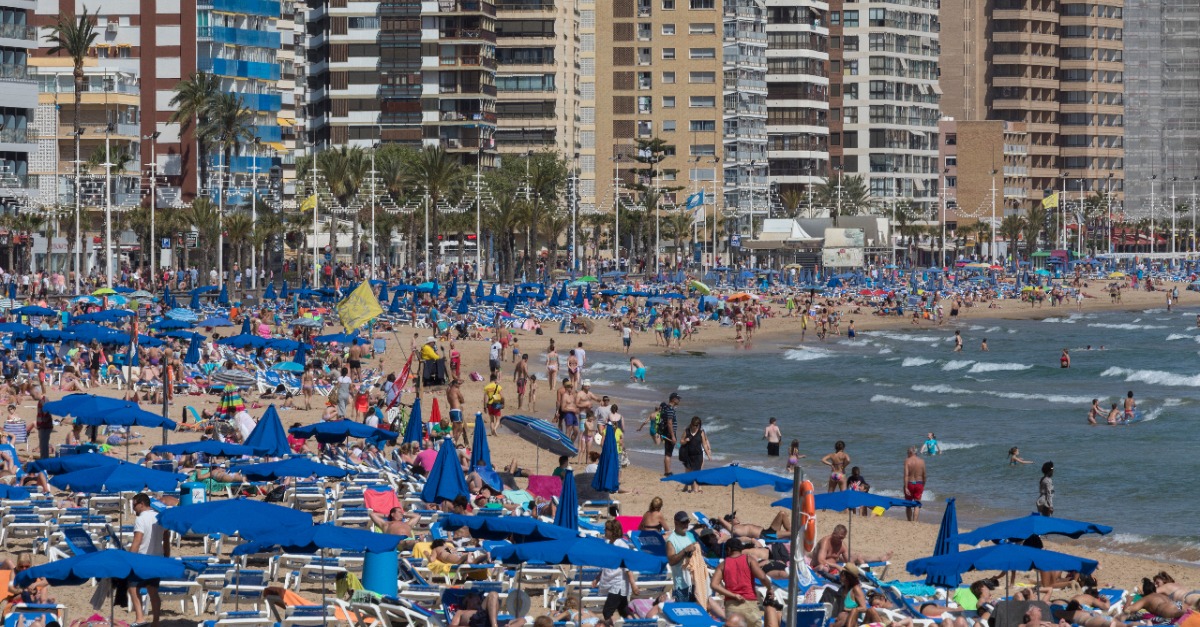The summer season in Spain kicks off with a bang: while prices for accommodation and gastronomy are soaring, the tourism industry is optimistically looking forward to a record season. Foreign tourists, in particular, are expected in droves, which should push both the number of arrivals and the spending volume to new highs. For domestic travelers, expectations are somewhat more modest, although a slight improvement over last year’s figures is also anticipated.
Foreign Tourists Drive the Record
The forecasts for international tourism are promising. The State Society for the Management of Innovation and Tourism Technologies (Segittur) expects an increase of 2.7% in foreign travelers between July and August compared to the previous year. A total of 22.37 million international visitors are anticipated during these two months. These impressive figures could lead to Spain surpassing the 100 million visitor mark by the end of the year. The expected record influx will also be accompanied by an unprecedented volume of spending. With a projected total expenditure of 32,208 million euros – 4.2% more than in 2024 – and average spending of 1,440 euros per international tourist (1.5% more than the previous year), the enormous economic power of the tourism sector is evident.
Domestic Tourism with Moderate Growth
Even though international demand is in focus, domestic tourism remains an important pillar of the industry. According to the summer report by the National Observatory of Outbound Tourism (ObservaTUR), eight out of ten Spaniards plan a summer vacation. Of these, 39% will travel abroad, while 61% will explore their own country. Segittur forecasts almost 39.1 million domestic trips for July and August, representing a moderate growth of 1%. The associated total expenditure is estimated at 12,641 million euros, an increase of 1.1% compared to the previous year. The average per capita budget for Spaniards’ summer vacations rises to 739 euros, 62 euros more than last year and a new record high.
Price Increases Across All Sectors
The record summer, however, comes at a price. INE statistics show that hotels, hostels, and similar accommodations have become 6.8% more expensive in the last year, with an average price of 118 euros per occupied room. Campsites and hostels also saw an increase of 4.4%. Particularly noticeable are the price increases for holiday rentals, which average 1,270 euros per week in August – a 6.9% increase compared to 2024. But it’s not just accommodation that’s affected: restaurants and cafeterias became 4.1% more expensive on average, and even ice cream costs 3.8% more than a year ago. Only flight tickets have remained more stable; international flights are even 0.9% cheaper, while domestic flights have only increased by 2.4%.
Optimism Despite Challenges: Over 700,000 New Hires Expected
Despite rising prices, the tourism industry remains optimistic about the future. Associations like Hosbec in the Valencian Community expect a repeat of the high hotel occupancy of 85% from 2024, with traditional coastal resorts like Benidorm and Gandía close to “technical full occupancy.” This optimism is also reflected in employment figures: Randstad Research forecasts a record of around 698,340 new hires for the summer campaign, representing an increase of 9.4% over the previous year. A large portion of these jobs will be created in gastronomy (246,945), transport and logistics (300,300), and retail (133,015). These positive outlooks currently overshadow discussions about overcrowding and tourist saturation in some major cities and tourist areas, which have led to local protests. Spain is ready for a summer of records, bringing both challenges and enormous opportunities for the entire economy.




